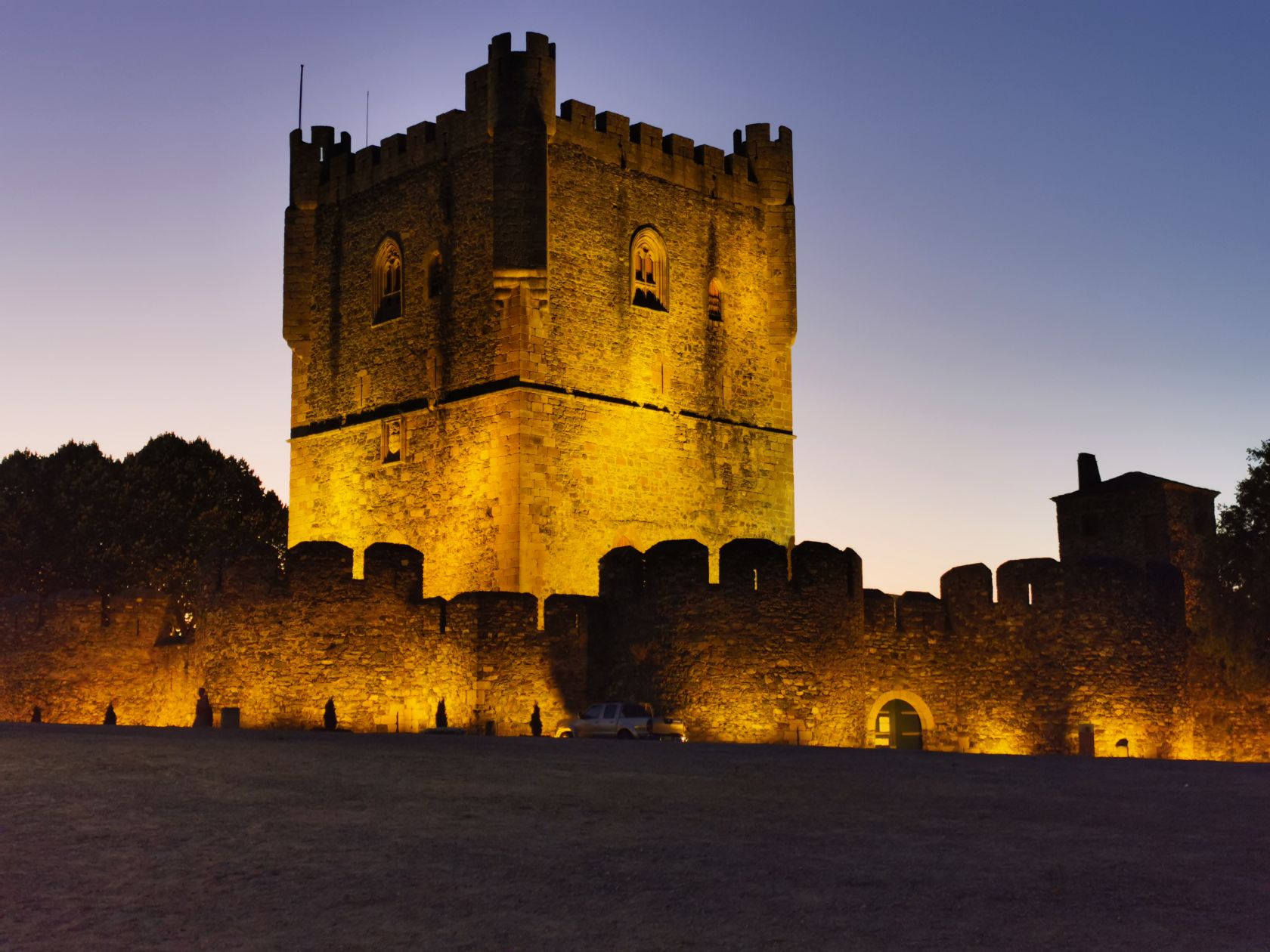It may be an ancient olive oil press, a surprisingly ornate church given the size of the village, or, as is the case of Nisa—pop. just 8,000—a lovely lace museum.
Recently, I rediscovered this truth in Bragança. We had passed through this city in the Trás-os-Montes region a handful of times over the years, but had never visited anywhere other than the legendary castle with its superb military museum.
We weren’t sure where to start, so we used proximity to the castle as one guideline. Another was hours of operation, as we have a habit of arriving just as the doors of an establishment are locking for lunch.
Experiencing culture
Close to the castle, we found the Iberian Museum of Mask and Costume. Several student groups were visiting as well, but it was still easy to take in all the items exhibited on the two floors of the museum. Senior admission was a bargain at €1. There we found masks and clothing typically worn during the Festas dos Rapazes, winter festivals of Trás-os-Montes, also celebrated in the nearby Zamora Province in Spain, and at Carnaval. Ranging in style from simply folkloric to frankly frightening, I was happy to take a moment afterward to rest in the shady green park across from the museum.

Jewish community
Some cities in Portugal we’ve visited—Castelo de Vide and Belmonte, for example—have long been home to a Jewish community. Here at the Center for the Interpretation of Sephardi Culture in the Northeastern Trás-os-Montes, the displays regarding the Jewish experience are compelling, particularly the Inquisition exhibit on the top floor.
Tip: It’s easy to miss the entrance to the Center. It’s right next door to the Tourist Office on R. Abílio Beça no. 103. There, we learned that, unfortunately, the Abade de Baçal was closed until October for renovation. The former 18th-century bishop’s palace became a museum in 1915 featuring collections of archaeological and numismatic items, paintings, sculptures, and more. Next time.
On that next visit, I’m sure we’ll swing by at least two other locales of note: the Georges Dussaud Photography Centre, to view his 200 black-and-white photos focusing on Trás-os-Montes culture; and Solar dos Teixeiras/Fundação/Os Nossos Livros. The Dr. Aguedo de Oliveira Library has one of the most valuable collections in Northern Portugal, focusing on the main areas of Law, Economics, Finance, Politics and History. So much culture, so little time.
Great cuisine
Of course, cuisine is a big part of culture, and the Portuguese do have a fondness for wild boar. We had noticed a restaurant, Taberna do Javali, just off the castle, its patio tables packed with a lunchtime crowd. But as neither of us eat this specialty, we searched elsewhere to make a dinner reservation and found a gem in Solar Bragançana, located in the heart of town at Praça da Sé, 34.

We arrived and were given the option of being seated in the interior of the 18th-century manor house or the candlelit garden patio. Soon we understood why reservations were essential at this acclaimed restaurant, as tables filled up inside and out during the course of our meal: partridge for my spouse, and a superb tomato and cheese omelet with roasted potatoes and fresh green salad for me. Dinner for two with wine: €42.
Wildlife enthusiasts
Not only are there places in town to see, but wildlife enthusiasts will enjoy the chance to spot deer, wild boar, the Iberian wolf and 150 species of birds in Montesinho Natural Park, a mere thirty-minute drive from the city.
Always a great time
I don’t think there’s a wrong time of year to come here. August is the busiest month, when they hold the Festa de Bragança featuring food and drink, handicrafts, and entertainment over five days. December and January are the next two most popular times to visit, so I guess many are not concerned about chilly temps then. You may want to look into a trip here in the low season, October, or perhaps even a bit later, to celebrate the chestnut harvest with a glass of Água-pé on St. Martin’s Day, November 11.
We had booked a hotel room in town for only one night as we were planning to tour different cities in the area and didn’t want to be locked into the same base. But we ended up spending five nights at Hotel Exe São Lázaro. Its location was ideal for driving everywhere we wanted to go and still return for the evening. And it offered so much: friendly, professional staff; a sparkling, clean and spacious room; sumptuous free breakfast buffet; restaurant; swimming pool; fitness center; spa services; and a pool table in the lobby. We didn’t make use of the tennis court, and the miniature golf course left something to be desired, although it was good for a few laughs. In fact, for €65 a night, we were smiling a lot.














Excellent article, but Please enlighten your Conrad’s that a pastel de nata is not a Chinese replica, it’s an insult to the Portuguese culinary as pastéis de nata have been around the Portuguese culture for centuries.
By Jose from Other on 27 Aug 2025, 17:08